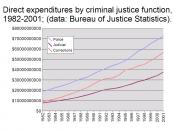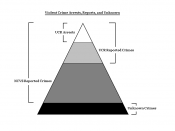IntroductionOne of the most prevalent problems in the United States and all over the globe would be violence (Kilpatrick 2004). It was even attributed as a major contributing factor to increased mortality and morbidity rates (Delgado 2000). The justice system became the center of debates because of their significant relation.
Under a more specific discussion, the argument for restorative justice was incarceration offered little in terms of rehabilitation opportunities for offenders (Delgado 2000). Instead, their prison time turned them into hardened and angry criminals that set up ÃÂa cycle of recidivism that serves neither them nor societyÃÂ (Delgado 2000, p. 751). Even if the victimÃÂs rights movement raised the clamor for restitution to be included in the court-ordered sentencing, only a few victims receive anything that resembled an apology (Delgado 2000).
According to the Victims Rights Movement, ÃÂtraditional criminal justice system does a second disservice to victims, by forcing them to relive their ordeal at trialÃÂ (Delgado 2000, p.
751). For the American criminal justice system to function, it must use the testimony of the victim to conceptualize that the perpetrator had committed a crime against the state (Delgado 2000). In return, the victim would be offered very little, if any, in terms of counseling services and support (Delgado 2000). The victim also experience a lack of control throughout the period of the trial as district attorneys rarely consult the victims at key points of the trial and decisions are made for them without their input (Delgado 2000).
The emergence of this movement served as a signal for restitution advocates that something had been missing from the justice system (Whiteley 1998). Recently, this had been addressed as the system took steps towards giving the victim a deserved, but limited role in the process (Whiteley 1998). They were able to give...


